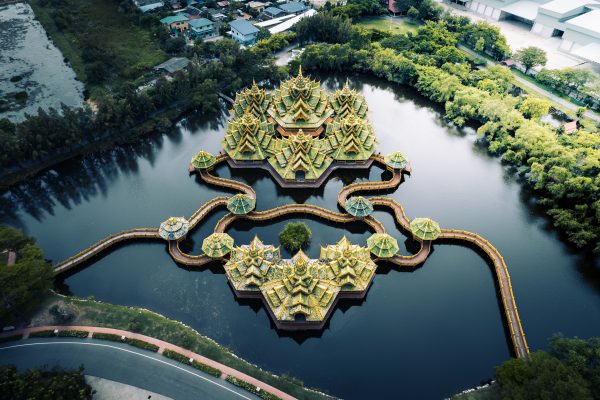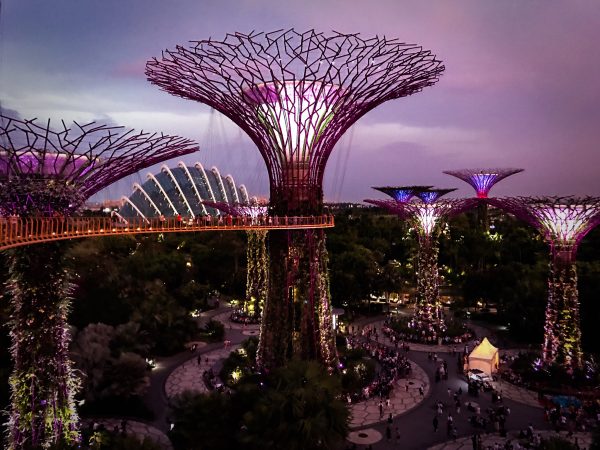
In the hustle and bustle of modern life, the longing for calmness and connection with nature is more pronounced than ever. In developed Western cities, as many as 76% of residents report experiencing feelings of loneliness in today’s society. Therefore, amidst towering skyscrapers and concrete jungles, architects are turning to nature-inspired design principles. They now create spaces that nurture the soul and enhance well-being. In this blog, we delve into the power of nature-inspired architecture and its profound impact on human health and happiness.
The Essence of Nature-Inspired Architecture
Nature-inspired architecture draws inspiration from the organic forms, patterns, and processes found in the natural world. It seeks to integrate these elements into the built environment. Thus, it creates spaces that evoke a sense of harmony and serenity. From biophilic design principles to biomimicry, architects are using innovative ways to bring the healing touch of nature into our cities and homes.
Just like here at BizForce, our architects also harness the essence of nature. They can infuse organic forms and patterns into their designs to cultivate spaces that resonate with harmony and serenity, echoing the principles of nature-inspired architecture.
Biophilic Design: A Return to Nature’s Embrace

Biophilic design stands as a profound testament to the intrinsic bond between humans and the natural world. It is reshaping our built environments to harmonize with the rhythms of nature. Moreover, it is rooted in the understanding of our deep connection with the environment. Therefore, biophilic design principles advocate for the integration of natural elements into architectural spaces. From the warmth of natural materials to the gentle play of sunlight filtering through windows, biophilic design seeks to evoke the restorative essence of nature within the built environment.
By immersing occupants in environments that echo the patterns and forms of the natural world, biophilic design cultivates a sense of well-being. Furthermore, it fosters creativity, productivity, and emotional balance. Through this symbiotic relationship with nature, biophilic design offers not just a blueprint for sustainable architecture, but a pathway towards a more holistic and in-sync way of living.
Biomimicry: Learning from Nature’s Wisdom
Biomimicry serves as a profound bridge between the ingenuity of human design and the brilliance of natural ecosystems. Therefore, it offers a plan for sustainable innovation. Additionally, it is rooted in the premise that nature has already solved many of the challenges we face. Therefore, biomimicry invites architects to study and emulate the strategies and systems found in the natural world.
Biomimicry Examples
Inspired by Termite Mounds
Biomimicry in architecture offers a fascinating array of examples where nature’s design principles have inspired innovative solutions to complex design challenges. One notable example is the Eastgate Centre in Harare, Zimbabwe. This masterpiece is designed by architect Mick Pearce. Termite mounds maintain a constant internal temperature despite fluctuating external conditions. Therefore, the building also features a passive cooling system that regulates temperature without the need for air conditioning.
Inspired by Soap Bubbles
Another impressive example is the Eden Project in Cornwall, UK. Architect Sir Nicholas Grimshaw drew inspiration from the structure of soap bubbles to design the iconic domes. These geodesic structures, reminiscent of natural forms, provide a sustainable and efficient environment for housing a diverse range of plant species.
Inspired by Soap Bubbles and Geometry of Natural Forms
Additionally, the Water Cube in Beijing, China, designed for the 2008 Olympic Games, takes cues from the structure of soap bubbles and the geometry of natural forms. The design creates an innovative facade that maximizes natural light and minimizes energy consumption. These examples illustrate how biomimicry in architecture not only yields visually appealing designs but also promotes sustainability and resilience by emulating nature’s time-tested strategies.
By harnessing nature’s time-tested solutions, architects can create buildings and infrastructure that minimize environmental impact. Moreover, they also actively contribute to ecosystem health. For instance, they can draw inspiration from the efficient cooling mechanisms of termite mounds. The self-repairing capabilities of the human skin can also be an inspiration. Biomimicry unlocks a treasure trove of possibilities for sustainable design. Through this harmonious synergy with nature, biomimicry not only fosters resilience and efficiency. Instead, it also cultivates a deeper respect for the intricate web of life that sustains us all.
The Healing Power of Nature
The wealth of empirical research highlighting nature’s profound impact on human health and well-being underscores the intrinsic connection between our environment and our physical and mental states. Moreover, studies consistently demonstrate that exposure to natural elements, including sunlight, fresh air, and greenery, yields significant benefits such as stress reduction, mood enhancement, and cognitive improvement. Nature-inspired architecture capitalizes on these findings by strategically integrating elements that mirror the restorative qualities of natural ecosystems into built environments.
Therefore, seamlessly blending indoor and outdoor spaces, incorporating biophilic design principles, and maximizing access to nature cultivate environments don’t only promote holistic well-being. They also foster a deeper sense of connection with the natural world. Through thoughtful design interventions, nature-inspired architecture endeavors to create spaces that nourish the body, soothe the mind and elevate the human experience.
Bringing the Outdoors In

Nature-inspired architecture redefines the relationship between indoor and outdoor spaces. Therefore, it seamlessly blends the boundaries between the built environment and the natural world. This integration is a cornerstone of the design philosophy evident in features like expansive windows framing picturesque landscapes and interior courtyards enveloped by lush greenery.
Therefore, erasing the distinction between indoors and outdoors creates immersive environments. These environments invite occupants to engage with the surrounding natural elements. Moreover, these design elements not only elevate the aesthetics of the space but also foster physical activity. These encourage social interaction and evoke a profound sense of connection with nature. Whether basking in natural light or communing with the calmness in a verdant courtyard, occupants are enveloped in an environment that nurtures both body and soul, reaffirming our inherent bond with the natural world.
More Nature-Inspired Architecture
Several notable examples illustrate the potential of nature-inspired architecture. The Bosco Verticale in Milan, Italy, features a pair of residential towers adorned with thousands of trees and shrubs. Therefore, it creates a vertical forest that purifies the air and provides a habitat for wildlife.
Additionally, the Gardens by the Bay in Singapore showcases a series of iconic supertrees and biodomes that celebrate the beauty and diversity of nature while serving as sustainable urban landmarks.

Conclusion
Nature-inspired architecture offers a holistic approach to design. It prioritizes human health, environmental sustainability, and harmony with nature. Moreover, biophilic design principles, biomimicry, and a deep respect for the natural world create spaces that inspire awe and wonder. Furthermore, these spaces also nourish the body, mind, and spirit. As we strive to create a more sustainable and resilient built environment, nature-inspired architecture serves as a beacon of hope. It reminds us of our intrinsic connection with the earth and our responsibility to protect and preserve it.
Discover the power of nature-inspired architecture with BizForce’s visionary architects. Our team embraces biophilic design principles, biomimicry, and a deep respect for the natural world to create spaces that harmonize with the environment and elevate well-being. Let us partner with your architecture and construction firm to craft awe-inspiring projects that nourish the body, mind, and spirit while championing sustainability. Together, let’s build a better future. Connect with BizForce today! Click here.
